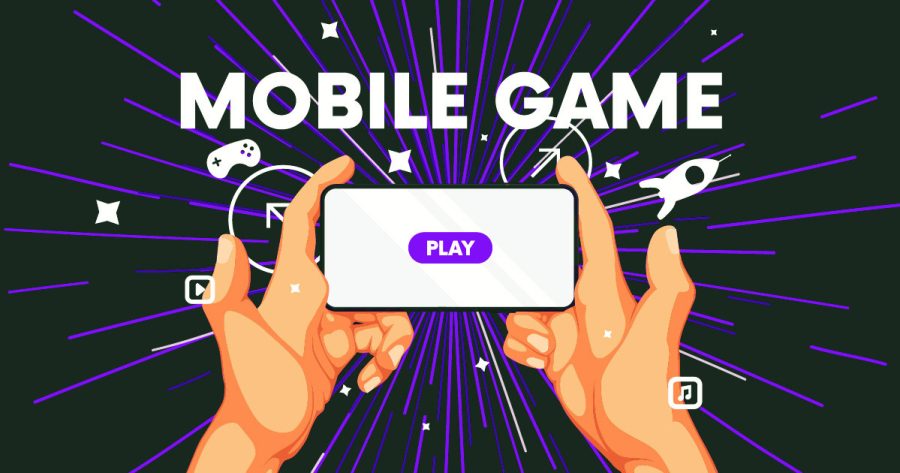(Part 3) Soft launch: our key tips to succeed in launching a mobile game

In our previous two articles (part 1 and part 2), we talked about the key points to follow during a mobile game soft launch. In this third and final part, we will go into detail, analyzing all the KPIs, their corresponding action plan, and the decisions to be taken to ensure the soft launch is a success.
Based on its experience with over 35 soft launches, including games like Supercell’s Everdale, Bandai Namco’s Tekken, Gnejoy’s Tuscany Villa, Jam City’s Cookie Jam, Sandsoft’s Rambo Strike Force, and more, Addict Mobile shares its advice for a successful soft launch.
KPI Analysis & Action Plan
What KPIs should be monitored?
In the context of a soft launch, it is crucial to have a clear strategy, particularly in implementing marketing actions that will help observe the evolution of the KPIs of interest.
The KPIs to monitor were mentioned in Part 2 and are often similar for most games: retention, DAU, ARPU, ARPPU, buyer rate, CPI, ROAS, etc.
We can identify 2 types of KPIs:
- inherent to the quality or attractiveness of the game: DAU, retention, CPI
- Inherent to monetization: ARPU, ARPPU, buyer conversion rate, ROAS
It is important to note that “Type 1” KPIs are essential for the success of a game, and “Type 2” KPIs can only be worked on if the game is attractive, and it is possible to acquire a significant volume of players at a controlled CPI.
The reverse is not true because even with the best possible monetization, whether through IAP or IAA, if players churn quickly or it is challenging to generate many users through User Acquisition, it will be difficult to generate revenues.
Consequently, it is crucial to work on the game, focusing on retention and User Experience, before concentrating on optimizing monetization. It is much easier to work on monetization mechanisms than the game design or core gameplay of a game.
3 key KPIs
Retention
This is the first indicator to measure before delving into everything else. Depending on the type of game and monetization, retention objectives will vary.
It is important to set realistic D1, D7, D30 retention goals. Beware of overly ambitious objectives, as we often observe unrealistic expectations. It should also be noted that D1 retention generally reflects D7, D30 retention, so actions can be taken very quickly to optimize this KPI before having long-term data.
When analyzing retention, it’s crucial to observe it by OS, country, acquisition source, organic reach, and especially see how it evolves with each game update.
Adapting the acquisition strategy according to this objective is also useful. There’s no point in targeting high-value users if the game’s D1 retention is < 15%. The challenge here is to improve player in-game interest before encouraging them to make purchases.
It’s worth noting that the mobile gaming industry generally relies on the following retention benchmark: D1 = 40% / D7 = 20% / D30 = 10%. However, reaching these performance levels is rarely observed. The idea is to get as close as possible to these KPIs.
CPI
Another important KPI: the acquisition cost of a user and the potential volume at a controlled cost. Even though CPI is not an end in itself, it is a significant proxy to judge future high-volume acquisition campaigns during the hard launch.
Perhaps the creatives, game style, or the way it is promoted are not suitable. Therefore, it’s essential to reflect on the acquisition strategy and work on these elements:
– Test different sources to benchmark, especially Meta vs. Google vs. Video Ad Networks like Unity or Applovin. Meta is essential thanks to its targeting capabilities and the granularity of the available data.
– Focus mainly on Android following the limits imposed by iOS 14.5 since April 2021. Android will provide more detailed insights
– Test different geos to see if cultural particularities generate performance differences.
– Have an adapted creative strategy to analyze what attracts players:
- Showcase different game features
- Gameplay VS. trailer
- Identify graphic elements that appeal (characters, universe, etc.)
The soft launch not only sheds light on player behavior and the game but also refines the UA strategy to maximize invested budgets.
IAA/IAP (Monetization)
Once the retention data is solid and the monetization is in place, you can work on the latter.
- IAA (In-App Ads)
Let’s start with games based on advertising monetization. To maximize IAA, you need to work on the following points:
– Define the ad display: frequency per user/session, integration into UX, etc.
– Negotiate with ad agencies providing the advertisements.
– Implement an optimal waterfall, usually through a mediation platform.
– Optimize its eCPM, floor price, fill rate, etc.
Unlike IAP, IAA is simpler to manage. The success of a game under IAA primarily lies in its retention and its ability to generate a high volume of users at a low CPI. Monetization follows from these factors.
- IAP (In-App Purchases)
The challenge here is to seamlessly integrate in-app purchases into the UX to encourage players to make payments.
The key KPI to check is ARPU, which is the result of ARPPU and the buyer conversion rate. Addict Mobile has observed that the crucial indicator to work on is the buyer conversion rate because it strongly influences ARPU and, consequently, the game’s revenue. At a large volume, the ARPPU of users tends to remain stable (at a constant scope), and what matters is the game’s ability to generate buyers. Increasing the buyer conversion rate from 8% to 10% can make a significant difference in large volumes.
In order to work on the ARPU, you must be methodical:
– Set clear objectives and a guideline
– Adapt the acquisition strategy based on the users to be captured (OS, country, optimization on installation or purchase, targeting, etc.)
– Compare apples to apples. For example, do not compare data from a campaign optimized at installation versus a campaign optimized at purchase.
– Compare the organic vs. acquisition data: organic data allows observing the “natural” behavior of users without any interference from creatives, targeting, or algorithms seeking specific users.
Iterate on monetization and observe the evolution of numbers, identifying concrete elements of the game or offer that improve results. To achieve this, avoid testing multiple changes simultaneously, as it will be more challenging to determine which modification had a positive or negative impact.
Important: Too often, acquisition campaigns are questioned when the game does not deliver satisfactory figures (ARPU, retention, etc.). However, UA teams cannot work miracles if the game does not satisfy players or if it does not monetize well.
Tips: benchmark the organic vs. acquisition data to determine whether the issue lies in marketing or the product.
Make hard decisions
The soft launch and its success will depend on the game, the strategy put in place, and the responsiveness of the teams to iterate, test and repeat.
Nevertheless, you must be able to make major decisions, as a soft launch delivers the truth about the game and allows for assessing its long-term potential and viability.
Depending on the financial capabilities, human resources, and ambitions of each studio, the duration of a soft launch may vary. However, it is crucial to be capable of making strong decisions, which can be:
1. Starting the Hard Launch (worldwide launch)
Creating a perfect game is impossible. However, when the game delivers satisfactory indicators, the UX is polished, monetization is ready, and UA has been tested, it is preferable to move on to the Hard Launch to reach a global audience.
The advantage of mobile games is that they will continue to be optimized, worked on, with new content, etc., so the hard launch is not an end in itself.
And most importantly, it will start generating real revenue to support the game/studio’s development.
2. Continue the Soft Launch
A soft launch is often planned for a limited duration since revenues are low before the hard launch, and it generates significant costs for the studio.
However, it is not recommended to launch a game with too limited KPIs. The first users acquired during the hard launch will be the most profitable. If the game is not well-developed or if monetization is lacking, there will be a significant missed opportunity.
In this case, it is preferable to extend the soft launch by a few weeks or months, depending on the studio’s financial capacity, to refine these aspects.
3. Kill the game
The production of a game very often generates high development costs. However, during the soft launch, little revenue is generated, thus the cost balance increases. And the longer this lasts, the bigger the hole created before the hard launch.
However, if, after various iterations, the game is far from the expected KPIs, and the estimated revenues are low despite all the efforts already made, it is better to kill the game rather than persist in its development. Avoiding continued financial losses and limiting the damage is more productive than continuing the development of a game that shows no potential.
It’s a tough decision because a lot of energy, time, and love have been invested, but it is often more opportune to start a new project and learn from failures, which are common in the mobile gaming world.
Rediscover the previous part of this article series: part 1 and part 2. Don’t hesitate to contact us if you would like assistance in launching your game.
Author: Manuel Pacreau, User Acquisition Director @Addict Mobile
With more than 10 years of expertise in Mobile acquisition, Manuel has managed Addict Mobile Adops teams since 2016
NEWS
Article in relation

Do you speak mobile gaming?
With 2.2 billion active mobile gamers worldwide and consumer spending reaching $107.3 billion in 2023, the mobile gaming market remains a thriving sector....
Published on 18 March 2024
(Part 2) Soft launch: our key tips to…
Dans notre premier article nous expliquions l’importance d’un soft launch pour le lancement d’un jeu sur mobile : comment bien identifier les objectifs...
Published on 18 December 2023
(Part 1) Soft Launch: our key tips to…
A game’s soft launch is full of excitement and tension and is always eagerly awaited by the production teams. After months, even years,...
Published on 3 December 2023

